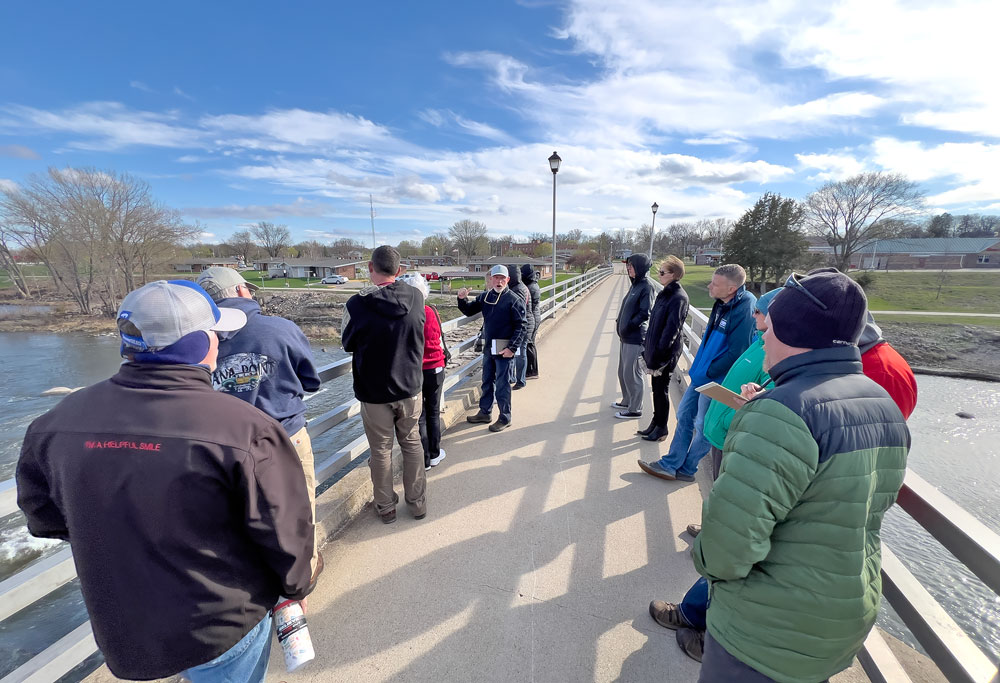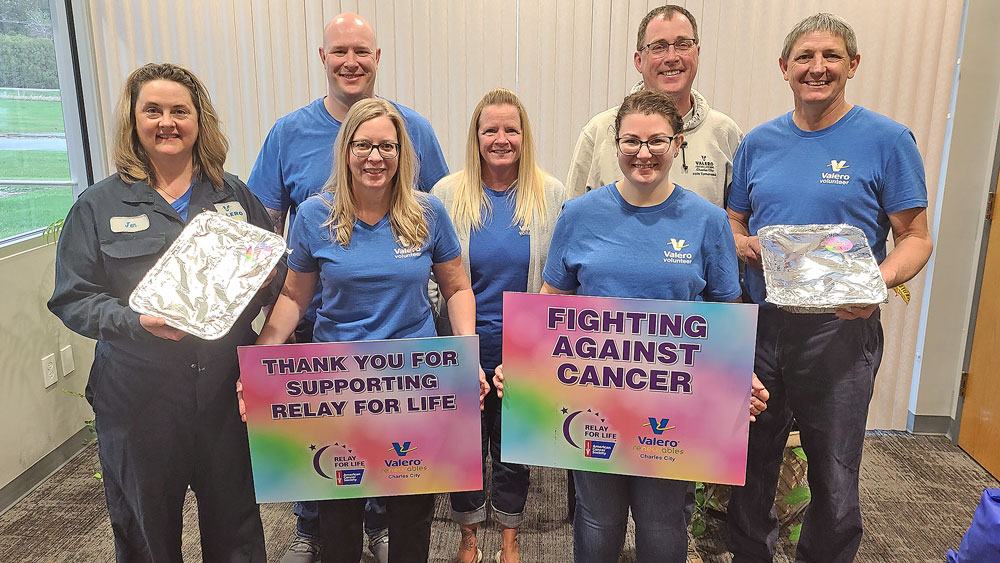Medical center works to attract more physicians

By Bob Steenson, bsteenson@charlescitypress.com
One of the bigger challenges facing small rural hospitals is recruiting physicians.
For the Floyd County Medical Center, the first serious effort in that regard in a while has been a success. Dr. Michelle Im has been hired and will start work in Charles City next fall after she finishes her family practice residency.

But that success doesn’t mean the county hospital will — or can — rest on its laurels.
Physician recruiting is one of those things that can keeps a hospital administrator awake at night, said Rod Nordeng.
Nordeng, the administrator at FCMC, said the medical center wants to find family practice physicians who are interested in delivering babies.
Part of the challenge is just a numbers game.
“About 10% of candidates of the potential pool of residents still want to deliver, so annually the pool we’re recruiting from is under 1,100 physicians,” he said. Of those, many aren’t interested in practicing in rural areas, or in small communities.
Nordeng said it’s important to the Floyd County hospital and clinic to have physicians who will deliver babies, but fewer doctors want to do that.
“Many physicians in family medicine want to be in a clinic setting, Monday through Friday, 8 to 5, and that’s it,” he said. “If you’re delivering babies you’re on call.”
There are also increased liability concerns with delivering babies, he said.
Nordeng stressed that none of the current doctors in town is planning on retiring soon, but finding new or additional physicians can be a long-term process.
“It’s not only the physician, but what is the physician’s spouse or partner looking for?” he said. “Sometimes they’re looking for employment. Sometimes they’re looking at staying home and raising a family, so the question becomes what are the amenities the community has for the physician’s spouse or partner.”
He gave an example of a couple who recently made a recruitment visit to Charles City. She’s a doctor who will finish her family practice residency next fall. Her husband is looking for an opportunity in agriculture.
The medical center has offered her a contract, and she said she will make her decision by Monday, Oct. 14.
“He can find employment, but is there somebody who’s looking for a partner to join their farming enterprise?” Nordeng said about the husband.
“Does he have an opportunity to do something more than just work for somebody, but truly develop a business farming-type partnership? Here’s a young farmer that not only has the background, the skills, the desire, but will have the financial resources, too,” Nordeng said.
The couple have had interviews with six health care providers and have narrowed their decision down to Charles City and one other, and the availability of a suitable opportunity for the husband may be the determining factor.
“If there’s somebody out there, they need to get hold of us this week,” Nordeng said, adding that he can be contacted on his cellphone, at 507-440-5521.
Nordeng said some health care centers have gone to systems where expectant mothers rotate through a group of physicians for their care and whoever is working when she delivers is the doctor she gets. Others have doctors who work exclusively in the hospital, and a patient’s primary care physician never sees them outside the clinic.
“Our physicians and our nurse midwife want to deliver their patients’ babies, even when they’re not on call. That’s not the norm in health care any more,” Nordeng said. “We’re fortunate that we’re still focusing on the mom’s desires whenever we can.”
He said the recent efforts to begin recruiting for family practice physicians are the first for the medical center in 14 years.
“That’s unheard of,” he said. “It really speaks to a community, a medical center and a group of providers that have embraced what we’re doing.”
The process of recruitment involves different phases and players, he said.
“There’s a list of contacts generated, so we look at those in residency, those who contact the recruitment firm and then there’s a vetting process to narrow it down from there,” he said.
With some candidates it becomes apparent quickly that they wouldn’t be a good fit.
“You need a good fit for the community, for our own staff, and for the patients that they’ll be seeing,” he said. “You hope that they’ll stay long. Our vision is long term.”
Nordeng said the goal is to get candidates who they are interested in to visit the medical center and the community.
The first thing they show candidates is who their colleagues will be.
“They have an opportunity to meet the other physicians and the advanced practice providers. Is this a group that they want to partner with? Are they individuals that they’ll want to trade on call with, cover patients? We all like to like the people we work with,” Nordeng said.
“No. 2, is this administratively an organization that allows physicians to practice medicine?” Nordeng said. “I’m not a physician, so I have a different role than them, but if I can remove some of the roadblocks and allow them to practice medicine, it provides them with satisfaction in their role.”
Candidates also look at the facility, the quality of the staff and the equipment.
“And then they really do look at the community,” he said. “What’s available for the schools, what’s housing like, what are the arts like? What’s the distance to airports for travel? Those things are all important, and I think what sets us apart.”
He said FCMC is unique in still being independent.
“That can be very positive because, sometimes in a system structure, rules or oversight come from leadership that does not know the individual physician. Here, they know where my office is located. I’m within 250 feet of where any of them are on any given day,” Nordeng said.
“Another thing that’s important is, are we going to be around for the next 10 or 20 years of their career, and we certainly will be,” he said.
Nordeng said the intent when the recruitment process started 15 months ago was to hire one new physician, “and then we had this wonderful second candidate, and we’re like, let’s see if we can secure her.
“But I think we’ve transitioned into it needs to be an ongoing thing, just because of how long it takes and you don’t know what the future holds.”
Nordeng said the recruitment process is challenging and requires a lot of people at the medical center and in the community to be successful. Community leaders understand the importance of health care to the community, he said.
“You need the help from everybody,” he said. “Provide a little bit what’s not the norm in a standard physician recruitment, where you really get to know the individual, you get to know their spouse or partner, and equally importantly, they get to know us.
“Are we going to meet their needs that it’s truly a calling, or are we going to treat them like it’s just a laborer,” he asked. “Are we going to truly show them that, for their calling, this is the place they should be?”







Social Share